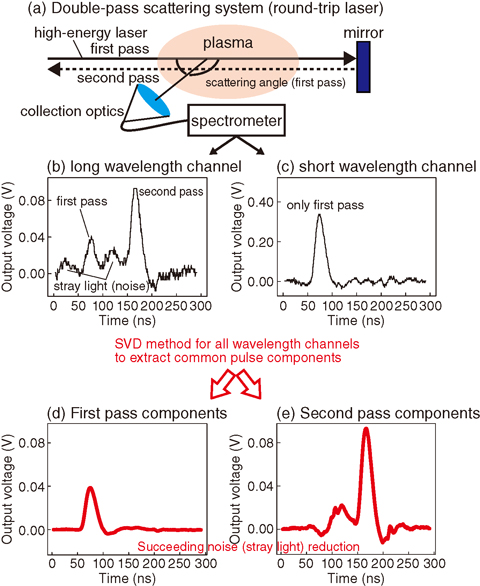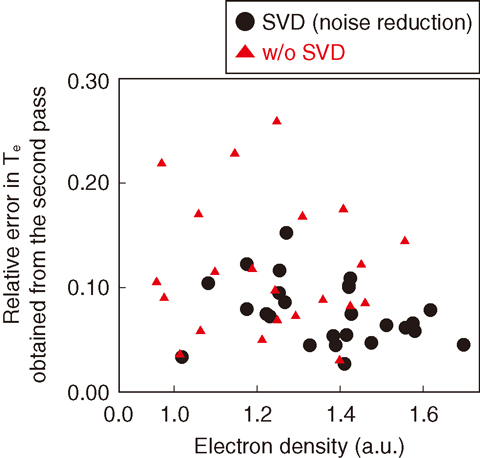
Fig.9-17 Double-pass scattering system and output signals

Fig.9-18 Comparison of the relative error in the electron temperature obtained from the second pass in LHD experiments
When a high-energy laser goes through the plasma, scattered light (Thomson scattering) is generated along the laser path. Electron temperature and density in the plasma can be calculated from the measured spectrum of the scattered light. Recently, double-pass scattering systems, whereby laser beams pass through the plasma twice using a reflection mirror and provide scattered lights twice, have been developed (Fig.9-17(a)) in some fusion experiments. This system is utilized for spectral calibrations and for evaluating discrepancies in electron temperature between the parallel and perpendicular directions about the magnetic field. Analyzing two different spectra generated from the double-pass scattering makes this possible.
However, the double-pass scattering system sometimes suffers from intense stray light, which overlaps with the pure scattered light in the measured signals because of multiple diffuse reflections of the laser on the vacuum windows. Shaping of the overlapped signal is difficult because both components (stray and scattered light) are similar in the frequency space. A noise removal method using singular value decomposition (SVD), which does not use the Fourier analysis, was employed to extract pure scattered signals.
We tested the method using data obtained in the Large Helical Device (LHD) under a collaboration study with the National Institute for Fusion Science. Figs.9-17(b) and (c) present output signals from two wavelength channels in the spectrometer. Strong noise components (presumably stray light) appear in the long wavelength channel (Fig.9-17(b)). Use of the signals from all six wavelength channels enables the effective extraction of pure scattered signals. The extracted components (signals) for the first and second passes are obtained as shown in Figs.9-17(d) and (e), respectively. Fig.9-18 compares relative errors in electron temperature obtained from the noise-reduced signals by the SVD and from the raw signals for many measurements. Use of the former case is effective to ensure good accuracy. This noise reduction method can be used for a JT-60SA Thomson scattering system.